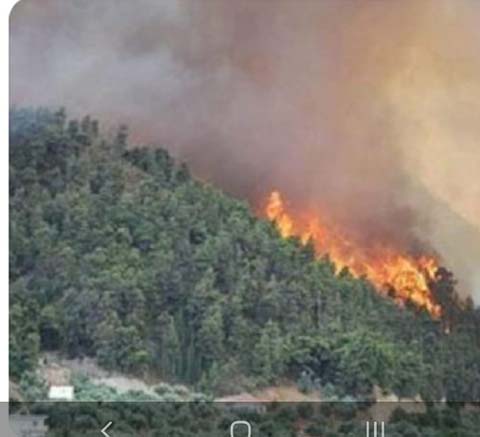SHIMLA: The Forests experts say that the frontline forest workers and local communities are the best bat for controlling the menace of forest fires in the Himalayan and other states in the region.
They drove home the message: "Do not wait for a disaster to happen – try to end it before it is merely realized".
This is mantra that should spread around among all stakeholders.
Fires in the region are destroying biodiversity and ecosystem services for local communities every year.
Workshops and seminars come and go, but the forests continue to burn every year as there are few on the ground zero to control the fires in the region.
The experts and foresters say that new techniques and best practices along with enhancement of the role of effective social media as well as the latest modern tools and technologies such as blowers, drones, mobile alert systems can be a game changer.
The economic and ecological damage caused by this disaster is huge and series of forest fires continue to burn forest after forest in the region every year.
While systems exist to deal with, mitigate and respond to forest fires, we still have failed to make it fully authentic, involving all stakeholders.
To address the burning issue, these experts, like in the past, gathered at a one-day consultation workshop on "National Project on Forest Fire Management" here today at Himalayan Forest Research Institute (HFRI), Shimla.
The workshop was funded by the National Disaster Management Authority (NDMA), New Delhi, the apex body for disaster management in India.
The speakers represent a multi-disciplinary conference. They represent 17 organisations and institutions such as MoEF&CC, NDMA, HFRI, Himachal Forest Department, Jammu and Kashmir Forest Department, Uttarakhand and Punjab Forest Department, UHF Nauni, GB Pant, NIHE, FSI, NDRF, SDMA, JAICA HP, Himachal Police, Himachal Fire Service, UNDP.
There were also public representatives.
They all discussed the best practices in forest fire management: innovation, community participation and livelihoods.
They discussed the need for early warning, feedback, research, and training to mitigate forest fires.
Dr. Sandeep Sharma, Director in-charge of HFRI, highlighted the role of communities in controlling the forest fires in the area.
Kunal Satyarthi, Secretary, J.T. NDMA highlighted the innovative schemes and initiatives being developed and supported by him as well as the role of NDMA towards forest fires.
He also informed that India is the first country among developing countries to have an alert system about disasters in the form of apps and other electronic media.
Ajay Srivastava, PCCF Himachal Pradesh Forest Department shared the basic problems related to forest fires.
He emphasized that the response time to deal with fires is very short- which is a major obstacle to controlling forest fires.
He further reiterated the essential role of communities in controlling forest fires.
Participants also put forward their diverse interesting and innovative ideas.
The deliberations were evaluated and countered by the Project Drafting Committee of NDMA for quality inputs.
Satyarthi also stressed on the important role of fire line, control of forest fire, reducing response time and the important duty of forest guards and firefighters at the time of fire.
He was of the view that the good equipment required for forest fire management was not discussed much.
Srivastava emphasized that Himachal being a hilly state, the equipment and clothes required for fire management should be lightweight and fire resistant.
Dr. P.K. Mathur, Lead Consultant (UNDP-NDMA) analysed the outcomes of the workshop saying that the workshop focuses on four bio-geographically important states/Union Territories of Punjab, Himachal Pradesh, Uttarakhand and Jammu and Kashmir.
He was of the view that the traditional system of fire fighting, which was once the mainstay of fire control, has now become weak and ineffective.
He emphasised that two major groups, frontline workers of the state forest department and the local community, would both play a decisive role in controlling these fires in the region.
The main outcomes of this workshop focus on awareness and sensitization, capacity building of stakeholders, community engagement and community incentives, mitigation guidelines and forest fire prevention.





